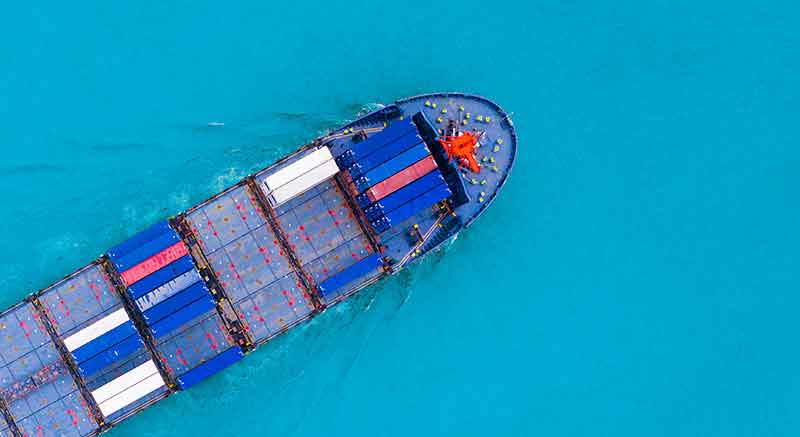When shipping from China, the Shipper Letter of Instruction (SLI) stands out as a pivotal document, playing a crucial role in facilitating the smooth movement of cargo across borders.
Today’s tutorial will provide insights into shipper instructions and guide you through the format and tips for completing them. Furthermore, we also will offer a downloadable template for your convenience.
What is a shipper letter of instruction?
A Shipper’s Letter of Instruction is a crucial document the shipper/exporter provides to various parties involved in the transportation process. Examples include freight forwarders and customs brokers.
It empowers authorization to the logistics partner to coordinate the transportation of the goods and manage the filing of customs-related documents.
Moreover, this shipper instruction also informs the specifics of the cargo and the necessary steps to ensure a smooth and compliant ocean or air shipping process.
Who uses the shipper instructions?
As mentioned above, the shipper completes the Shipper’s Letter of Instruction in advance and sends it along with the other shipping documentation to the freight forwarder.
Depending on the nature of the shipment, other intermediaries, such as consolidators, carriers, or third-party service providers, may also refer to the SLI shipping form for accurate information.
Key components of an SLI format
While the Shipper’s Letter of Instruction is not obligatory, no standardized form exists, and you can create your own template.
Frequently, the content within the SLI form typically encompasses information and contact details for all parties in the transaction as below:
Shipper of the cargo
The party provides detailed instructions to freight forwarders and other logistics partners involved in the transportation process.
Intermediate consignee
A party or entity involved in the transportation and logistics process, positioned between the shipper (exporter) and the ultimate consignee (receiver or importer). This role is typically fulfilled by a forwarding carrier.Ultimate consignee
A person or company functions as the final recipient of the cargo and accepts the delivered items in a foreign country.
Freight forwarding agent
A professional to handle and integrate shipping processes on behalf of the shipper. Experts in the field can ensure smooth delivery, like Airsupply.

In addition, the shipper’s instructions also include details regarding the shipment and supporting documents. Here are additional fundamental elements that should be included in the form:
- Origin and final destination of the shipment
- Shipping method (air, sea, land) and mode (FCL, LCL, etc.) of transportation
- Total quantity, weight, and volume of cargo
- Method of delivery (consolidated or direct) and terms of shipping (prepaid/collect)
- Shipping marks and numbers: Identification marks on the packages for easy tracking
- Information required for customs clearance, including HS classification and value declaration
- Specific instructions for preparing and handling required shipping documents, such as the commercial invoice, packing list, letter of credit, etc
- Details about cargo insurance, including coverage and necessary documentation (if needed)
- Signature of the shipper and the date of issuance
Tips to fill shipper's letter of instruction
About hazardous cargo
Shipping dangerous goods has its own set of regulations and challenges. It is mandatory to include a Material Safety Data Sheet (MSDS) with your documentation if you declare your goods are hazardous cargo.
Your forwarder can not proceed with shipping your cargo without this essential MSDS. Fortunately, many manufacturers or suppliers of hazardous materials can provide available MSDS electronically.
Special requirements or precautions for specific goods
Does your cargo have restrictions on stacking, or does it require specific orientation during shipping? Does it need customized packing or labeling? Utilize the special instructions box to highlight any additional details or requirements for the shipment.
Ensure accurate cargo weight and measurements
Accurate reporting of your shipment weight and dimensions in the shipper letter is crucial because discrepancies may result in additional charges or problems.
For example, legal regulations mandate the precise specification of your goods’ weight with 99.5% accuracy during sea shipment.
In completing your sea freight SLI format, you have the option to select Verified Gross Method (VGM). It aims to enhance safety in the maritime industry by preventing accidents caused by mis-declared container weights.
Identify associated charges payable by
The charges section on the SLI is designed to clarify payment responsibilities. As the shipper, you will designate your buyer (consignee). For additional guidance about shipping terms, refer to our article about Incoterm for further assistance.
Other destination requirements
If you require your forwarder to engage with your buyer at the destination regarding matters beyond the standard shipping terms, indicate these specific requirements in the destination requirements box.
For example, you may instruct, “Kindly furnish a Proof of Delivery (POD) upon completion of the delivery.”
Free shipper letter of instruction template
Please be aware that the following provided sample is a generic outline, and you have the flexibility to tailor it to fit the specific details of your shipment.
Alternatively, you can partner with an ASLG shipping expert to manage your cargo. We will provide the Shipper’s Letter of Instruction form in PDF, Excel, or Word format.
Find the best freight forwarder to ship your cargo
From handling documentation, seamless customs clearance, and compliant solutions for different goods types, we go the extra mile to provide end-to-end forwarding services.
In addition to the core logistics services, ASLG is equipped with the latest visibility tracking system. It allows you to monitor the cargo in real-time, gaining insights into the shipping journey and ensuring peace of mind!




